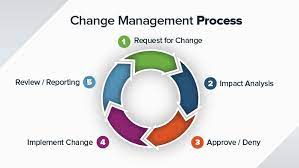Aspects of Change Management Plan
Mar 27, 2023
This paper explores the aspects of a Change Management Plan. It will begin by discussing why we need change management plans and what they can do for organizations. It will then go into more detail about the different components of a change management plan, such as stakeholder analysis, communication strategies, training, implementation planning, and risk mitigation. Finally, it will discuss how to develop an effective change management plan that is tailored to an organization's specific needs.
Change Management Plans (CMPs) are essential for any organization undergoing significant changes in its operations or structure. They provide guidance on how to transition smoothly from one state to another by outlining key steps that must be taken to ensure success. CMPs help organizations assess potential risks associated with the transition and plan accordingly so that they can minimize disruption and maximize the positive impact of the change.
Stakeholder Analysis is a key component of any Change Management Plan. It involves identifying all stakeholders who will be affected by the changes and analyzing their needs, expectations, interests, and concerns. This helps organizations understand how different groups of people may respond to the changes so that they can plan accordingly. Communication strategies should also be developed as part of the CMP in order to ensure that all stakeholders are informed about what is happening and why.

Training is another important aspect of a Change Management Plan. It allows organizations to prepare employees for the upcoming changes so that they know what to expect and have an understanding of how to proceed. Training sessions should focus on both technical aspects of the change and how it will impact day-to-day operations.
The implementation of the Change Management Plan is critical for success. Organizations should plan carefully to ensure that all steps are carried out correctly and on time. Milestones should be established to track progress, and contingency plans should be created in case any challenges arise during the transition process.
Finally, organizations must have a strategy in place to mitigate risks associated with the changes they are making. Risk management strategies help identify potential problems before they occur and provide solutions to address them if necessary. These strategies can also help organizations minimize or eliminate financial losses caused by unexpected issues or delays during the transition process.
Developing an effective Change Management Plan requires careful planning and consideration of an organization's unique needs and goals. Every plan should be tailored to the specific situation in order to ensure that it is successful. With careful attention to all of the aspects discussed above, organizations can develop CMPs that will help them transition smoothly and achieve their desired outcomes.
The importance of a Change Management Plan cannot be overstated. It provides guidance on how to transition from one state to another while minimizing disruption and maximizing positive outcomes. It also helps organizations assess potential risks associated with the changes they are making and plan accordingly so that they can address any issues or delays during the process.
